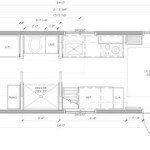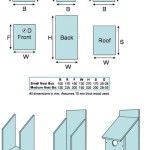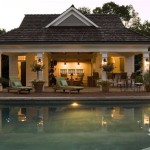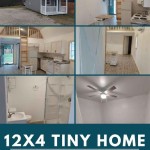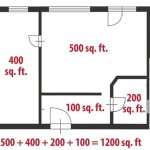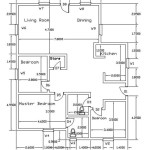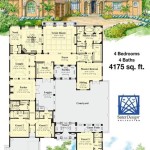Plans For Peterson Bluebird House: A Comprehensive Guide
The eastern bluebird (Sialia sialis) occupies a cherished place in North American ornithology and folklore. Its vibrant blue plumage and gentle disposition have made it a welcome sight in gardens and open woodlands. However, habitat loss and competition from introduced species have historically impacted bluebird populations. Nest boxes, specifically designed according to established guidelines, have become instrumental in bluebird conservation efforts. Among the various nest box designs, the Peterson bluebird house stands out for its innovative features and proven effectiveness in promoting successful bluebird nesting.
The Peterson bluebird house, developed by Dick Peterson, incorporates principles of bluebird behavior and predator deterrence. Unlike traditional box designs, the Peterson house features a unique entrance hole placement and internal dimensions aimed at maximizing bluebird occupancy and minimizing interference from non-native species like the house sparrow (Passer domesticus). This article provides a comprehensive overview of the Peterson bluebird house design, detailing its key features, construction recommendations, and considerations for optimal placement to attract and support bluebird populations.
Key Design Features of the Peterson Bluebird House
The Peterson bluebird house differentiates itself from conventional nest box designs through several key modifications. These alterations are primarily focused on enhancing bluebird nesting success and reducing competition from house sparrows, which are known for their aggressive behavior towards native cavity-nesting birds.
Firstly, the most distinctive feature is the oval entrance hole. This elongated hole is positioned higher in the front of the box compared to standard circular entrances. This higher placement makes it more difficult for house sparrows to enter, as they prefer a lower entrance point. The vertically oval shape also provides a more natural entrance profile that bluebirds readily accept.
Secondly, the Peterson house interior dimensions are carefully considered. The floor size is typically 5 inches by 5 inches, which provides adequate space for a bluebird nest while discouraging house sparrow occupancy. The depth of the box, from the entrance hole to the floor, also plays a critical role. A sufficient depth prevents predators from reaching into the nest, while also allowing young bluebirds to easily reach the entrance when they are ready to fledge.
Thirdly, ventilation and drainage are crucial aspects of the Peterson design. Ventilation holes near the top of the box allow for airflow, preventing excessive heat buildup during hot weather. Drainage holes in the floor facilitate the removal of moisture, reducing the risk of mold or bacterial growth within the nest. These features contribute to a healthier environment for developing bluebird chicks.
Finally, the Peterson house typically includes a hinged roof or side panel for ease of monitoring and cleaning. Regular monitoring allows for the removal of unwanted nests (specifically after nesting season) and the detection of any potential problems, such as predator activity or parasite infestations. The ability to easily access the interior of the box is essential for responsible bluebird management.
Construction Guidelines for a Peterson Bluebird House
The construction of a Peterson bluebird house requires careful attention to detail and the use of appropriate materials to ensure its durability and effectiveness. Following a precise plan is crucial for optimal results. The following guidelines outline the recommended materials and construction techniques:
For materials, untreated cedar, redwood, or pine lumber is highly recommended. These woods are naturally resistant to decay and weathering, eliminating the need for chemical treatments that could be harmful to bluebirds. Avoid using pressure-treated lumber, as it contains chemicals that can leach into the nest environment. The lumber should be at least ¾ inch thick to provide adequate insulation and structural integrity.
Cutting the wood pieces should be done according to the specific dimensions outlined in a Peterson bluebird house plan. Precise measurements are essential for ensuring the proper fit and function of the box. Most plans call for a front piece with an oval entrance hole that is approximately 1 3/8 inches wide and 2 1/4 inches high. The roof should overhang the sides and front of the box to provide protection from rain and sunlight.
Assembly of the box involves securely fastening the wood pieces together. Use exterior-grade screws or nails to ensure a strong and durable construction. Avoid using glue, as it can deteriorate over time and may contain harmful chemicals. The roof should be attached with hinges to allow for easy opening and closing. A latch or swivel hook can be used to secure the roof in the closed position. Ensure that the hinges and latch are made of rust-resistant materials.
Ventilation and drainage are integral to the construction process. Drill at least four ¼-inch ventilation holes near the top of the side panels. Drill four ¼-inch drainage holes in the floor of the box. These holes will prevent water from accumulating inside the house. It is important to countersink all screws and nails to prevent sharp edges from harming the birds.
Finally, avoid adding perches to the exterior of the box. Perches can actually aid house sparrows and other predators in accessing the entrance hole. A smooth, unadorned exterior is the most effective deterrent. The interior of the box should also be left unpainted and unsurfaced to provide a natural nesting environment.
Optimal Placement and Monitoring Strategies
The effectiveness of a Peterson bluebird house depends not only on its design and construction but also on its proper placement and ongoing monitoring. Selecting an appropriate location and implementing regular checks are essential for maximizing bluebird occupancy and nesting success.
Habitat considerations are paramount in selecting a suitable location. Bluebirds prefer open habitats with scattered trees and shrubs, such as fields, meadows, and orchards. Avoid placing nest boxes in heavily wooded areas or near buildings, as these locations are less attractive to bluebirds and more prone to competition from other species. Face the nest box away from prevailing winds and direct sunlight, ideally towards a wooded area or open field. This orientation provides protection from the elements and reduces the risk of overheating in the summer.
Mounting the nest box at the correct height is also important. The recommended height is typically 5 to 6 feet above the ground. A sturdy post or metal pole is the preferred mounting method. Avoid attaching the box directly to a tree, as this can make it more accessible to predators. Use predator guards, such as conical baffles or stovepipe baffles, to prevent snakes, raccoons, and other climbing predators from reaching the nest box. These guards should be installed below the box on the mounting pole.
Monitoring the nest box regularly is essential for identifying and addressing any potential problems. Check the box at least once a week during the nesting season, which typically runs from early spring to late summer. Look for signs of bluebird activity, such as nesting material or the presence of adult birds. Carefully open the box and inspect the nest, being careful not to disturb the birds or eggs. Record the number of eggs or chicks and monitor their development. Remove any unwanted nests, such as those of house sparrows, as soon as they are detected. After the nesting season, clean out the nest box to remove old nesting material and prepare it for the following year. This helps to prevent the buildup of parasites and diseases.
Finally, consider establishing a bluebird trail, which consists of multiple nest boxes placed along a designated route. Bluebird trails can significantly increase bluebird populations in a given area. Space the boxes at least 100 yards apart to minimize competition between bluebird pairs. Maintain the trail regularly and keep accurate records of bluebird activity. By following these guidelines, individuals can contribute to the conservation of bluebirds and enjoy the beauty and charm of these beloved birds in their own backyards.

Bluebird Birdhouse Plans How To Build A Peterson Slant Front Style House Joao De Barro Casas

Peterson Bluebird Bird House Plans

How To Build A Bluebird House In An Afternoon Diy Family Handyman

Peterson Bluebird Birdhouse Project Popular Woodworking

Audubon Birdhouse Plans Free Home Peterson Blue Bird House Bluebird

Nest Box Plans More Bluebird Recovery Program Of Minnesota

How To Build A Bluebird House In An Afternoon Diy Family Handyman

How To Build A Bluebird House In An Afternoon Diy Family Handyman

Select Cedar Peterson Bluebird House

Select Cedar Peterson Bluebird House
Related Posts

